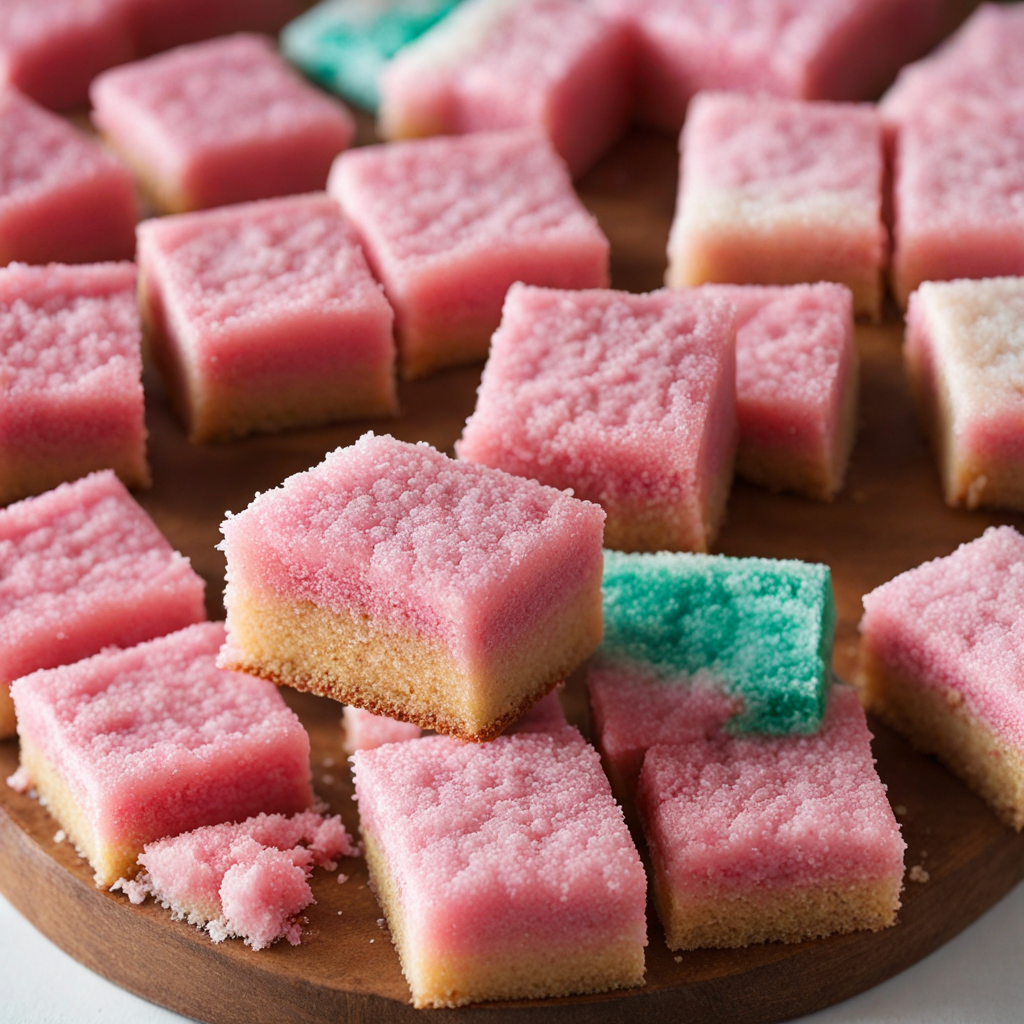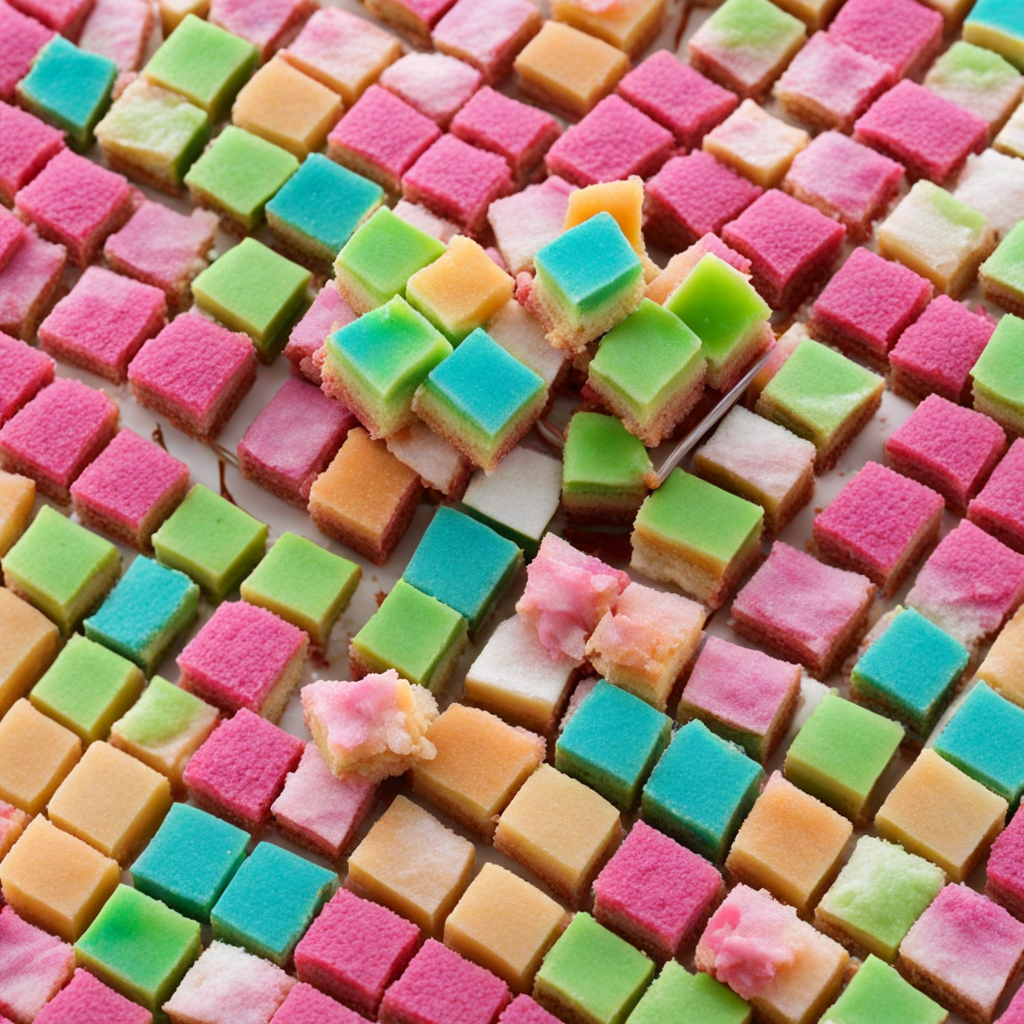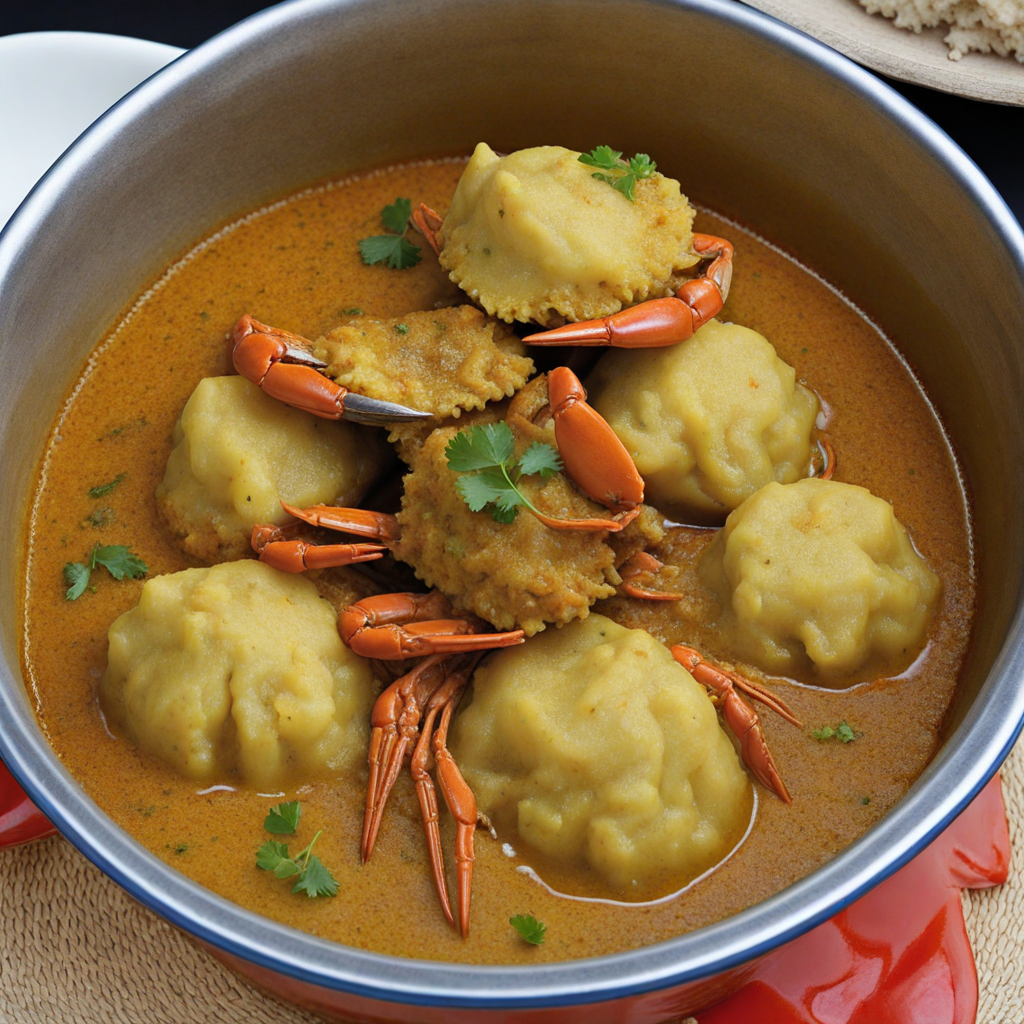Sugar Cake
Sugar Cake is a delightful treat hailing from Trinidad and Tobago, characterized by its sweet, coconut-rich flavor and chewy texture. This traditional confection is made primarily from grated fresh coconut, sugar, and a hint of vanilla, which work harmoniously to create a sweet and satisfying bite. The process of making Sugar Cake involves cooking the ingredients together until the sugar dissolves and the mixture thickens, then pouring it into a mold to set. The result is a vibrant, white or lightly golden cake that is often cut into small squares or rectangles, making it perfect for sharing during festive occasions or as a casual snack. The unique taste of Sugar Cake comes from the use of freshly grated coconut, which imparts a natural richness and a slightly nutty flavor. The sugar used can vary, with some recipes calling for brown sugar to deepen the flavor profile, while others may use white sugar for a cleaner sweetness. The addition of spices like nutmeg or sometimes even a splash of rum can elevate the flavor, making each bite a celebration of Caribbean sweetness. The texture is chewy, with a slight crunch from the toasted coconut, creating a satisfying contrast that keeps you reaching for more. In Trinidad and Tobago, Sugar Cake is not just a dessert; it is a cultural staple, often enjoyed during festivals and gatherings, symbolizing joy and togetherness. It can be found at local markets and roadside stands, where vendors sell it fresh, often alongside other traditional delicacies. With its simple ingredients and easy preparation, Sugar Cake embodies the essence of Caribbean cooking—celebrating local produce while offering a deliciously sweet escape. Whether enjoyed on its own or paired with a cup of tea, Sugar Cake is a must-try for anyone looking to explore the flavors of Trinidad and Tobago.
How It Became This Dish
The Sweet History of Sugar Cake in Trinidad and Tobago #### Origins Sugar Cake, a beloved confection from Trinidad and Tobago, is a delightful treat that combines the rich flavors of coconut, sugar, and spices. Its origins can be traced back to the island’s complex blend of indigenous, African, Indian, and European culinary traditions, making it a true reflection of Trinidadian culture. The emergence of Sugar Cake is closely tied to the sugarcane industry, which has played a significant role in the economic and social history of the Caribbean. Sugarcane was introduced to the Caribbean by the Spanish in the early 16th century. However, it was the British who capitalized on its cultivation, establishing plantations that relied heavily on enslaved African labor. This dark chapter in history laid the groundwork for the culinary practices that would evolve on the islands. As enslaved individuals and later indentured laborers brought their own food traditions, new recipes emerged, blending various ingredients and techniques. Coconut, a key ingredient in Sugar Cake, is native to Southeast Asia but became a staple in the Caribbean due to its versatility and abundance. The use of coconut in desserts is a tradition that has roots in both African and Indian cuisines, and Sugar Cake is a prime example of this fusion. #### Cultural Significance Sugar Cake is more than just a sweet treat; it embodies the spirit of Trinidadian celebrations, particularly during festivals like Christmas, Diwali, and Carnival. The dessert is often made in large batches for family gatherings, community events, and religious observances, symbolizing togetherness and joy. In Trinidadian households, making Sugar Cake is often a communal activity that brings families together. Recipes are passed down through generations, each family adding their unique twist, whether it be the addition of spices like nutmeg or cinnamon, or the use of different types of sugar. The act of making Sugar Cake is steeped in tradition, with stories and memories woven into the process, reinforcing familial bonds and cultural identity. During festive seasons, Sugar Cake is not just a dessert; it is a symbol of generosity and hospitality. Offering Sugar Cake to guests is a way of sharing the sweetness of one’s home and culture. It has become a staple in local markets, where vendors sell freshly made cakes, drawing in both locals and tourists alike. This visibility has helped elevate Sugar Cake from a homemade treat to a celebrated part of Trinidad and Tobago’s culinary landscape. #### Development Over Time The evolution of Sugar Cake reflects broader changes in Trinidadian society. In the early 20th century, as the sugar industry declined, there was a shift in the ingredients used for Sugar Cake. While traditional recipes relied on locally produced sugar, the introduction of refined white sugar and other sweeteners changed the flavor profile and texture of the cake. This shift also made it more accessible to a wider audience, as refined sugar became more affordable and widely available. As Trinidad and Tobago gained independence in 1962, there was a resurgence of interest in local cuisine and cultural heritage. The culinary scene began to embrace traditional foods as symbols of national identity. Sugar Cake, with its distinct flavors and textures, found its place in this renaissance. Culinary festivals and competitions began to highlight local sweets, and Sugar Cake became a symbol of pride, representing the resilience and creativity of Trinidadian people. In recent years, the globalization of food culture has influenced how Sugar Cake is made and consumed. Modern interpretations of the traditional recipe have emerged, with innovative twists that incorporate ingredients like chocolate, nuts, or even tropical fruits. These adaptations reflect a dynamic food culture that honors tradition while embracing contemporary tastes. Moreover, the rise of the internet and social media has allowed for the sharing of recipes and techniques, facilitating a culinary exchange that transcends geographical boundaries. Trinidadians living abroad also seek to recreate the flavors of their homeland, ensuring that Sugar Cake remains a cherished part of their culinary repertoire, regardless of where they reside. #### The Making of Sugar Cake Traditionally, making Sugar Cake involves a simple yet meticulous process. The primary ingredients include grated coconut, brown sugar, and a pinch of salt. Some recipes also call for spices like nutmeg, allspice, or vanilla to enhance the flavor. The preparation begins with cooking the grated coconut and sugar together in a pot, stirring constantly to prevent burning. Once the mixture reaches a thick, gooey consistency, it is poured onto a greased surface or into molds to cool and harden. The texture of Sugar Cake can vary depending on the cooking time and ingredients used. Some prefer a chewy, fudge-like consistency, while others enjoy a drier, crumbly texture. The versatility of Sugar Cake means that it can be customized to suit individual preferences, making it a beloved treat for many. #### Conclusion Sugar Cake is more than just a sweet confection; it is a testament to the rich cultural tapestry of Trinidad and Tobago. Its journey from the sugarcane fields to festive tables encapsulates the island's history, struggles, and triumphs. As it continues to evolve with modern influences while maintaining its traditional roots, Sugar Cake remains a cherished symbol of community, celebration, and the enduring spirit of Trinidadian culture. In a world that is increasingly globalized, Sugar Cake stands as a reminder of the importance of heritage and the joy of sharing culinary traditions. Whether enjoyed at a family gathering or purchased from a local vendor, each bite of Sugar Cake carries with it the stories of the people and the land that gave it life, ensuring that its legacy will endure for generations to come.
You may like
Discover local flavors from Trinidad And Tobago







